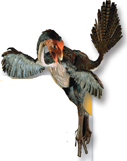
FIGURE 26–11 Evolution of Reptiles and Birds The diagram shows current hypotheses about the evolutionary relationships between living and extinct reptiles. None of the groups shown are direct ancestors of modern reptiles or modern birds.
dReptiles Reptiles, which evolved from ancient amphibians, were the first vertebrates to evolve adaptations to drier conditions. A reptile is a vertebrate with dry, scaly skin, well-developed lungs, strong limbs, and shelled eggs that do not develop in water. Living reptiles are represented by four groups: lizards and snakes, crocodilians, turtles and tortoises, and the tuatara (too uh TAH ruh).
The first known reptile fossil dates back to the Carboniferous Period, 350 million years ago. As the Carboniferous Period ended and the Permian Period began, Earth's climate became cooler and less humid. Many lakes and swamps dried up. Under these drier conditions, the first great adaptive radiation of reptiles began. By the end of the Permian Period, about 250 million years ago, a great variety of reptiles roamed Earth. The cladogram in Figure 26–11 shows current hypotheses about the relationships between living and extinct reptiles.  DOL•54–DOL•55
DOL•54–DOL•55
MYSTERY CLUE

How old would rocks need to be in order to contain fossils of the ancestors of birds?
▸ Enter the Dinosaurs The Triassic and Jurassic periods saw a great adaptive radiation of reptiles. Dinosaurs lived all over the world, and they ranged from small to enormous. They were diverse in appearance and in habit: Some, such as Plateosaurus, ate leafy plants; others, such as Coelophysis, were carnivorous. Duckbilled Maiasaura lived in family groups and cared for eggs and young. Some dinosaurs even had feathers, which may have first evolved as a means of regulating body temperature. The evolutionary lineage that led to modern birds came from one group of feathered dinosaurs.
▸ Exit the Dinosaurs At the end of the Cretaceous Period, about 66 million years ago, a worldwide mass extinction occurred. According to current hypotheses, this extinction was probably caused by a combination of natural disasters, including massive and widespread volcanic eruptions, a fall in sea level, and a huge asteroid smashing into what is now the Yucatán Peninsula in Mexico. That collision produced forest fires and dust clouds. After these events, dinosaurs, along with many other animal and plant groups, became extinct both on land and in the sea.
Table of Contents
- Formulas and Equations
- Applying Formulas and Equations
- Mean, Median, and Mode
- Estimation
- Using Measurements in Calculations
- Effects of Measurement Errors
- Accuracy
- Precision
- Comparing Accuracy and Precision
- Significant Figures
- Calculating With Significant Figures
- Scientific Notation
- Calculating With Scientific Notation
- Dimensional Analysis
- Applying Dimensional Analysis




